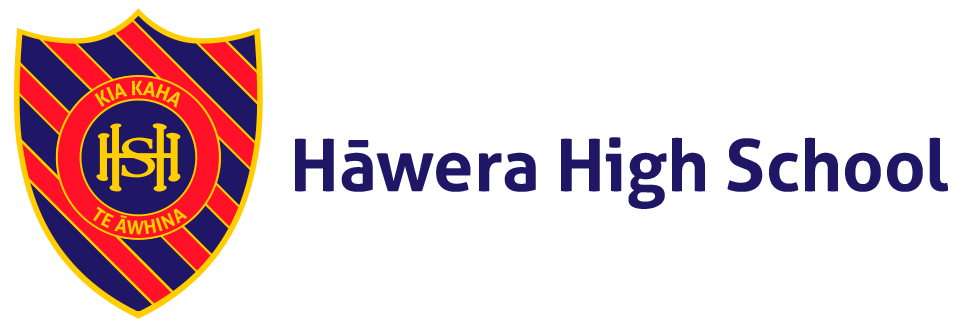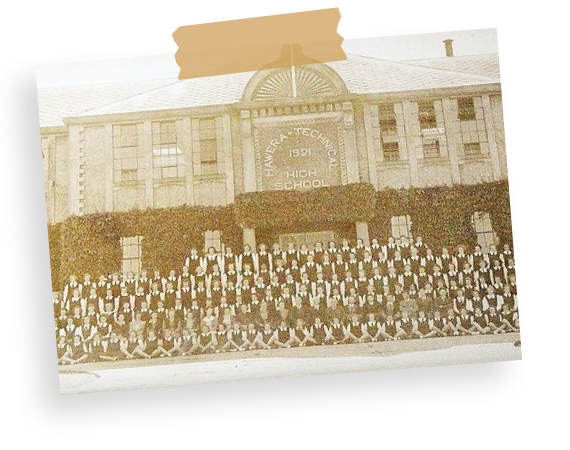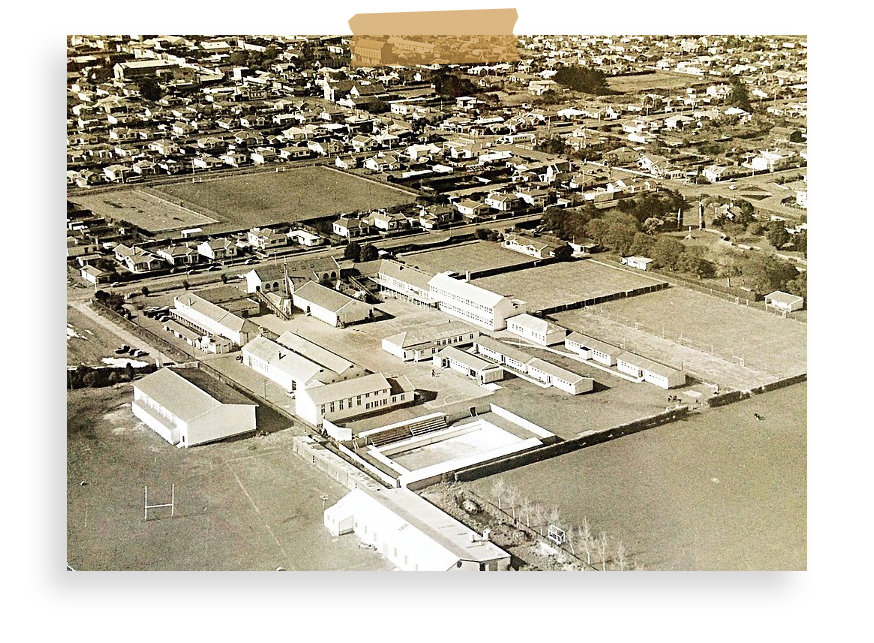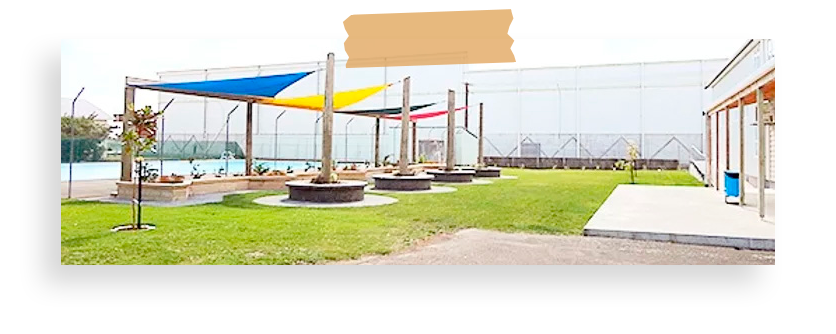
The growth of Hāwera High School reflects much of the story of Hāwera and its surrounding district. Its changes reflect the changes in the social and economic times of the past ninety years. The school has its origins in the primary school established in 1875, its transition into a District High School in 1901 and the demand for a Technical School in the next few years.
The school was born out of many strands of opinion expressed both locally and in the Parliament of the day. For many people, a High School was an irrelevancy. They thought that their children might be educated to become unsuitable for taking up the occupations on the land and in town. A small number of other people would continue to send their children away to various boarding schools that suited their pockets or ambitions, and for most Māori, this was not part of their expectations.
For those other people who saw that a High School education was a requirement for later vocational success for their children, the establishment of a Technical High School that prepared children for the national examinations and gave them understandings of commercial and technical practice, was vital to their future and their town.

In 1919 the school opened at the Technical School building in Princes Street and two years later moved to a new site in Camberwell Road. The school opened with a roll of 180, an advance on the District High School Secondary Department of 34 just two years before.
The new school drew on a wide country district with many pupils arriving by trains from Eltham and Patea. An initial staff of eleven taught a range of subjects grouped into Courses: Literary, Commercial, Domestic Science, Engineering and Agriculture. The Literary and Commercial Courses led to the national examinations and were followed by 80% of the students.
Agriculture seems never to have been a popular course. It must be borne in mind that until the 1940s, large numbers of pupils left school at standard 6 and went directly into farm or domestic work.
The need to prove academic success was no doubt in the mind of both the staff and students.
Scholarships and examination successes were soon taken and confirmed the community’s confidence in their school. In the 1930s, about 38% of the pupils had been over two years in the school: a much larger proportion than other secondary schools and three times that of most Technical Schools.
This reveals something of the esteem in which secondary schooling was held in Hāwera. A student from the time says, “All seven of us went to the Hāwera High School – how he (my father) managed it I shall never know.” Members of that family went on to gain considerable academic success.

The teachers of the school have enriched the life of the community and prominent local people have taken part in the life of the school, such as the contribution to school music made by HCA Fox from 1929 to 1945.As universal secondary schooling was achieved in the 1940s, the school roll and its curriculum changed. At the end of the 1930s the school catered for about 400 pupils but many factors contributed to a roll increase of nearly three times by 1970, making the school one of the largest of its kind at that time.
As secondary schools were established in Patea and Opunake, the school’s district has altered and with all pupils now spending three or more years in the school, both its role and relationship with the community is greatly changed from that of catering for a fortunate 180 pupils in 1919.
Adult education has been a feature of the school. As far back as 1909, the Technical School provided both day and evening classes for adult students. In 1930 evening classes were re-established and have become a feature of the High School’s role in the community. In more recent times the Taranaki Polytechnic has developed on some areas of the provision of adult education that had developed at Hāwera High School.The changing South Taranaki community will continue to be reflected in the changes that will be seen in the Hāwera High School in the fourth quarter of its first century. Arthur Fryer (1994)

The swimming pool was built in the mid 1950’s and the students were rostered out of class a few at a time to assist with the digging of the hole and the construction work around the site.
The building which currently houses the Canteen, Sports Office and Caretaker’s facilities was a large workshop complex with woodwork, and apprentice plumbing, motor mechanic and electrical training spaces.
The space between the pool and this building was a 25-yard outdoor rifle range for use by students under supervision during the Military Cadet programmes that ran in all state secondary schools. This was solely for use by boys.
The range faced west to east with the students lying on a mound in line with the main entry door to the present Canteen. 8 students at a time were on the mound and they fired .22 rifles down the range in grouping of 5 rounds at a time. The targets were set against a sand filled butt with a tall concrete block wall behind it. The concrete block wall had angled ends to it to reduce any chance of ricochets.

All male students were taught firearms use and safety unless their parents specifically requested that they be excused on religious grounds or physical disability. If this occurred, students were excused all cadet drill activities and were drafted into the school brass band, pipe band or the medical corp. As a consequence of that action, Hāwera Technical High School was well known for the expertise of its musicians.
The firearms were supplied by the NZ Army and were stored in the Armoury Building which was a small wooden shed at the back of what is now Dixon Block. Approximately 450 rifles and 3 light machine guns were housed in racks in this building. The ammunition was under staff lock and key elsewhere, unknown to the students!
Of the rifles, 80 dated back to the Boer War and were single shot, top loading carbines. 280 were Lee Enfield 303 bolt action decommissioned from World War Two. None of these were able to be fired, only used for drill practise. The remaining rifles were a mixture of .22 and .303 calibre target rifles for use on the school and town range.
The area between the Swimming Pool and Canteen is now known as “The Range” again following landscaping work undertaken by the Board of Trustees in 2014. The Range is now a well utilised area by students during break times.


